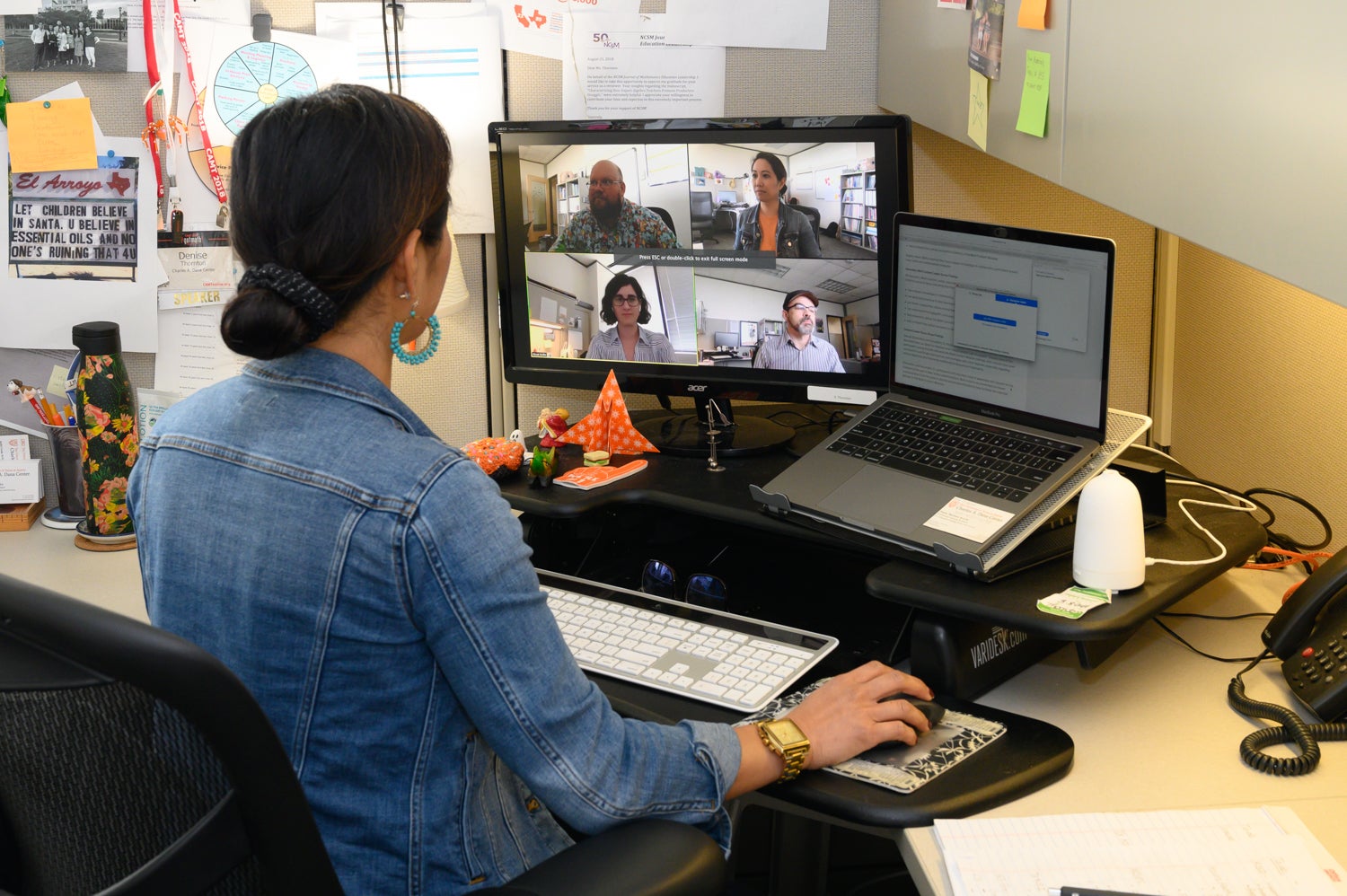
Making the Switch to Virtual Learning
As professional learning facilitators and former educators with more than 35 years of experience between us, we’re highly practiced at delivering learning sessions in person.
But when the Dana Center began working with the U.S. Department of Defense Education Activity (DoDEA) to conduct professional learning sessions for math educators, we realized that our skills needed an update. DoDEA teachers and educators work across the globe, and it wasn’t possible to fly to Japan or Germany or Guam for every single PD session. We needed to become just as adept at facilitating learning virtually as we were in person.
So what did we do? We practiced. We tried new things. We failed. We learned from our mistakes. And, after delivering hundreds of virtual learning sessions worldwide and in different time zones over the past four years, we developed new skills, procedures, and facilitation practices for virtual learning.
Virtual Learning Best Practices
Weigh the options between synchronous and asynchronous learning sessions.

Synchronous learning sessions occur at set times and allow all participants to learn together in real time. Asynchronous learning sessions give participants the opportunity to learn on their own time. Both have different engagement outcomes.
In synchronous or real-time virtual learning sessions, both you and your learners can get feedback in real time. You’re able to interact and discuss with your learners more deeply, and learners can voice when they are confused or need further help. Learners can also engage with one another during this type of session.
In asynchronous or divergent virtual learning sessions, learners have more flexibility and can progress on their own time and at their own pace. They can pause and reflect, journal, do extended readings, or watch demonstrations and other videos.
Each type of virtual learning session has very distinct ways you and your learners will engage. Before choosing one over the other, look at your learning outcomes critically to understand which type of session will get the results you need.
Understand your virtual platform inside and out.
Every virtual platform has different features. Some offer breakout rooms, some offer polls. Some have recording capabilities. Some have chat features. Some allow you to share your screen, while others have a whiteboard function. All of these bells and whistles can be useful in your virtual learning sessions, but you will need to understand how they work—inside and out.
One thing we’ve experienced while conducting both synchronous and asynchronous virtual learning sessions is the importance of clearly instructing learners how they will use and interact with their tools.
Giving detailed verbal instructions and having a written set of instructions (sent via chat or on a shared screen, as examples) help your learners navigate the technology. Plan for time in your lesson to go over tool instructions and for potential transition time between using the tools.
Setting expectations for your learners around their use of these tools is also necessary. For instance, after your learners are introduced to the chat feature, set a clear expectation on when and how questions or comments should be asked, whether you will be grading those, how to alert you to problems, and other considerations.
Start small and get acclimated.
If you’re preparing to facilitate your first virtual learning session, chances are high this may be your learners’ first virtual learning session as well. So take a deep breath because there will be a learning curve for all of you!
It’s important for both learners and facilitators to get acclimated to this new learning environment, so the key is to start small.
If your virtual learning platform has a lot of great features, it’s tempting to use them all in one lesson. We’ve found the best success in introducing features or tools one at a time. We can then build on that knowledge over subsequent sessions and begin to use additional tools.
Having another person help with facilitation is also useful in a virtual setting (though it’s not always possible). We often have one main facilitator focus on the learning while another person handles the technology (monitoring the chat, making sure breakrooms are running smoothly, etc). This may not be an option for your virtual sessions, but it’s something to think about.
Expect the unexpected.
It’s almost inevitable that things will go wrong during a virtual learning session. We’ve been in the middle of facilitating when the building’s fire alarm started blaring for 30 minutes straight. In one memorable session while Mike was facilitating from home, his kids popped in to his office to let him know that the toilet was clogged!
The Wi-Fi can cut out, people can screw up time zones…Mistakes will happen! But there are a few things you can do to mitigate these issues.
Always hit “record.” Most virtual learning platforms have the ability to record your session. This recording can be sent to learners who weren’t able to join the synchronous session. Even those who attended can go back to the recording for further research or clarification. Check your particular virtual platform to see if recording the session will also record any chats that may have occurred.
Make a plan and inform your learners on what to do if the session is unexpectedly disconnected. These things happen, but learners should know the plan ahead of time if the connection is unstable or gets disconnected.
Facilitating a virtual learning session is very different from an in-person learning session. But following these tips and being open to a new type of learning experience can lead to great results for you and your learners.
About the Author
Michael Greenlee
I come from a family of teachers and have always had a passion for learning. That passion has moved me in my career from an elementary classroom teacher, to a district math coach, to here at the Dana Center where I work with teachers and leaders. I enjoy my work helping teachers think deeply about how their students learn and about how they can grow as professionals.
About the Author
Denise Thornton
My 20-year (and counting) journey as a mathematics teacher and leader has been a “trial by fire.” I learned to survive working with high school teenagers, middle schoolers, fellow teachers, and school administrators through resiliency and a commitment to learn and find the resources needed to navigate life as an educator.
Get in Touch
We collaborate with states, districts,and teachers to develop innovative curricula, resources, and professional development.


